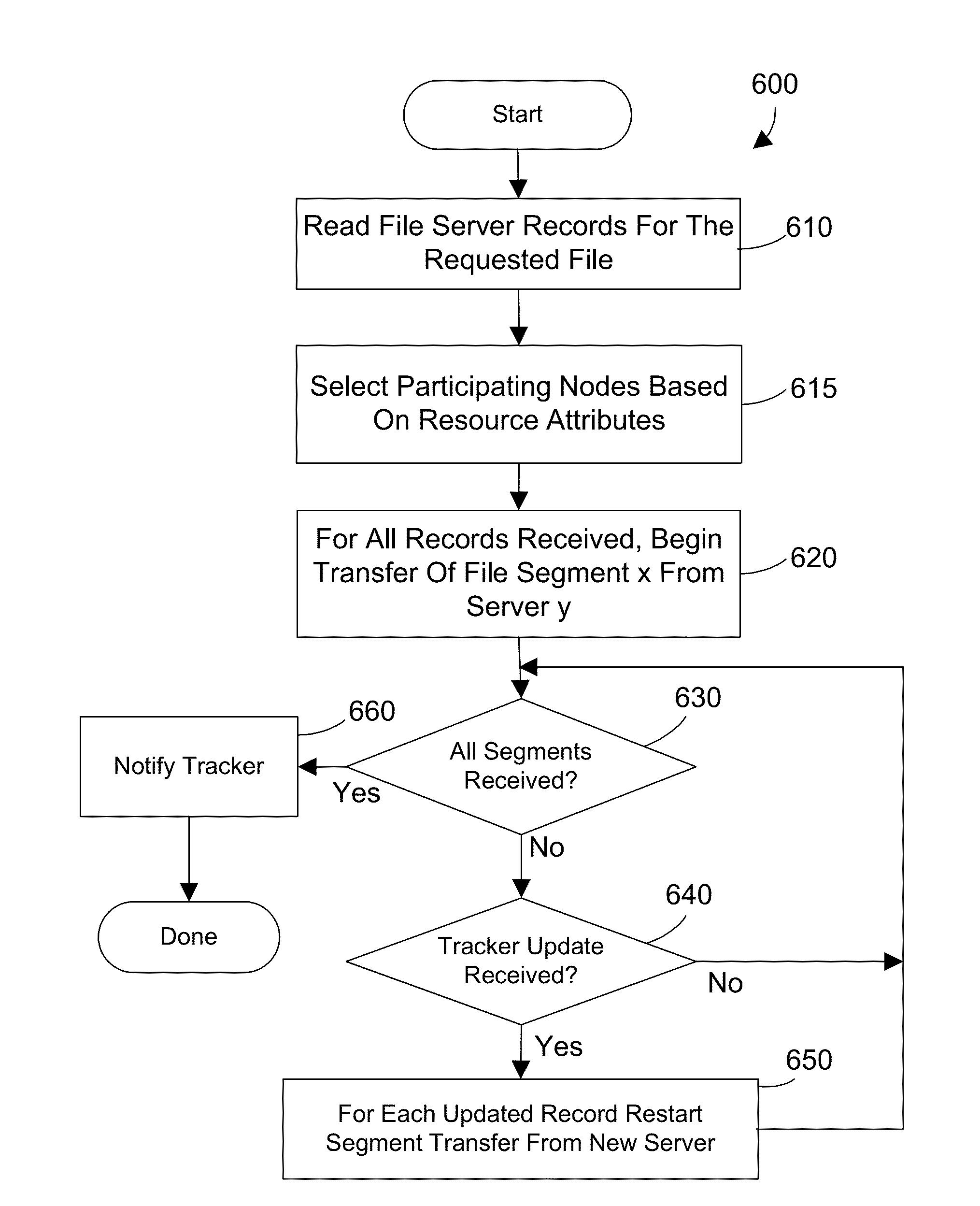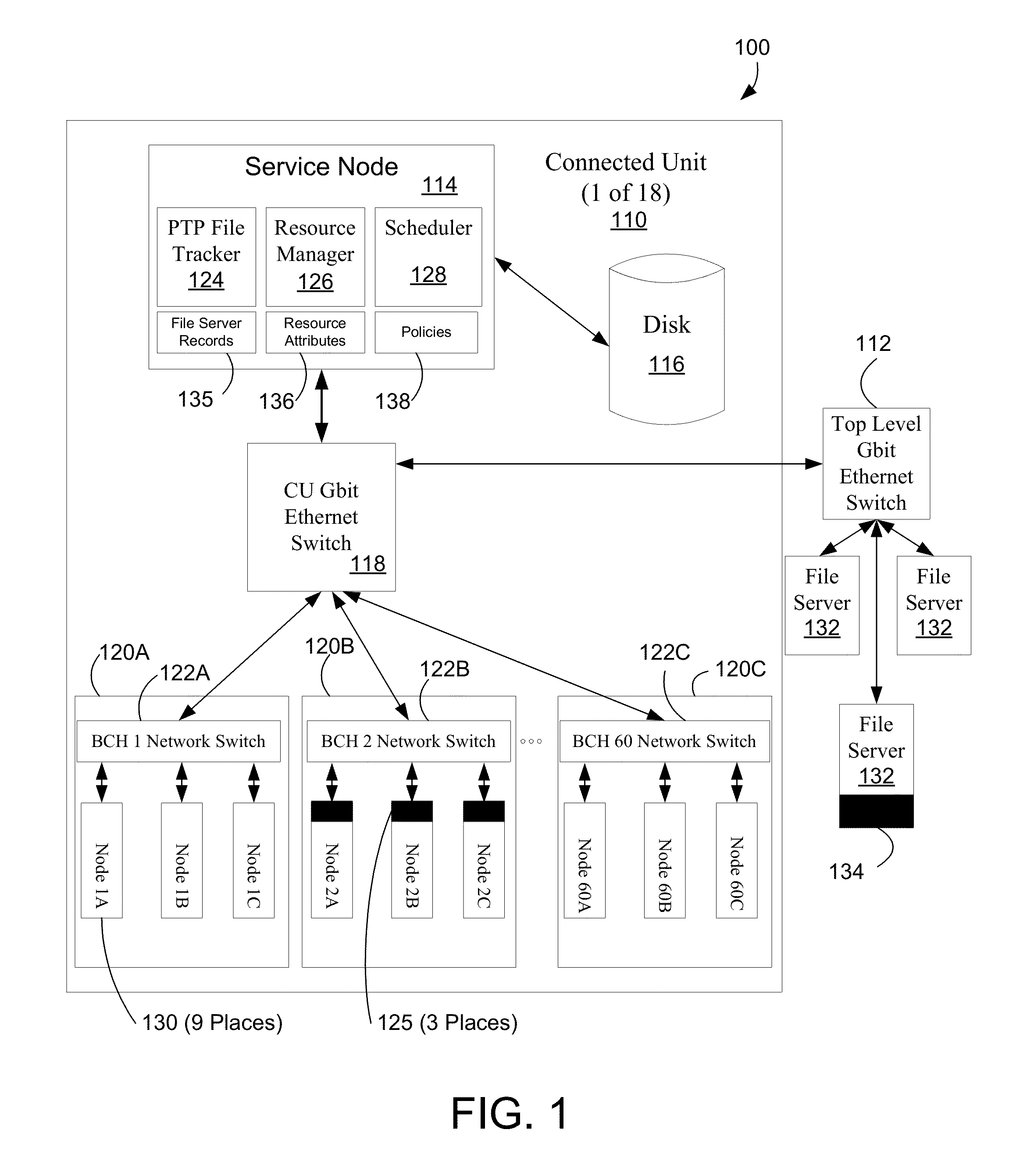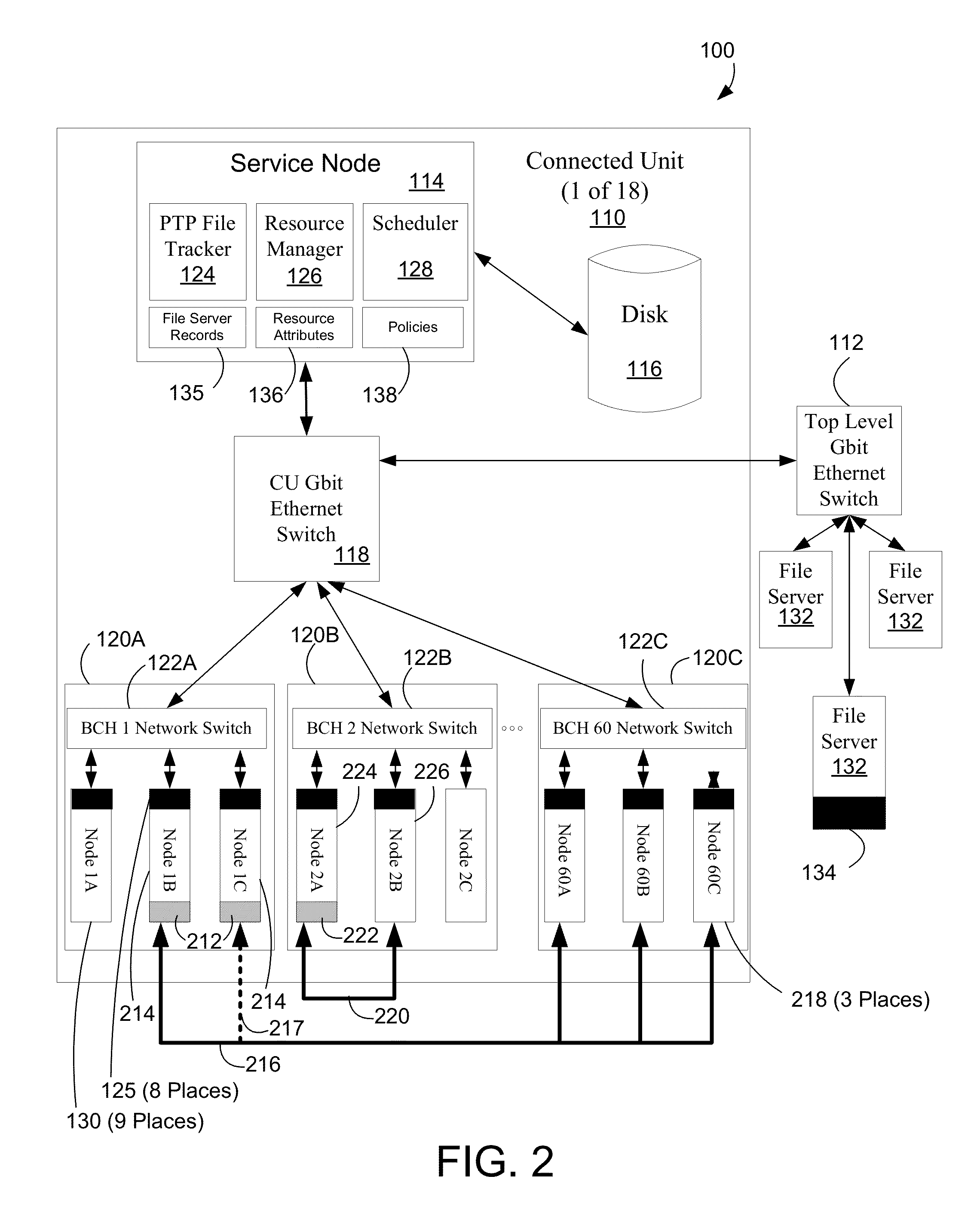Optimized peer-to-peer file transfers on a multi-node computer system
a computer system and multi-node technology, applied in the field can solve the problems of reducing efficiency of multi-node computer systems, affecting the normal operation/administration of other nodes on the cluster, and sending an enormous amount of data while booting nodes, so as to facilitate ptp file transfers, reduce loading, and reduce the time needed to load nodes
- Summary
- Abstract
- Description
- Claims
- Application Information
AI Technical Summary
Benefits of technology
Problems solved by technology
Method used
Image
Examples
Embodiment Construction
[0021]An apparatus and method is described for peer-to-peer file transfers on a High Performance Computing (HPC) cluster. A peer-to-peer file tracker (PPFT) allows operating system, application and data files to be moved from a pre-loaded node to another node of an HPC cluster. A peer-to-peer (PTP) client is loaded into the nodes to facilitate PTP file transfers. Using PTP file transfers reduces loading on networks, network switches and file servers to reduce the time needed to load the nodes with these files, thereby increasing the overall efficiency of the multi-node computing system. The selection of the nodes participating in file transfers can be based on network topology, network utilization, job status and predicted network / computer utilization. This selection can be dynamic, changing during the file transfers as resource conditions change. The policies used to choose resources can be configured by an administrator. The examples herein will be described with respect to the Ro...
PUM
 Login to View More
Login to View More Abstract
Description
Claims
Application Information
 Login to View More
Login to View More - R&D
- Intellectual Property
- Life Sciences
- Materials
- Tech Scout
- Unparalleled Data Quality
- Higher Quality Content
- 60% Fewer Hallucinations
Browse by: Latest US Patents, China's latest patents, Technical Efficacy Thesaurus, Application Domain, Technology Topic, Popular Technical Reports.
© 2025 PatSnap. All rights reserved.Legal|Privacy policy|Modern Slavery Act Transparency Statement|Sitemap|About US| Contact US: help@patsnap.com



